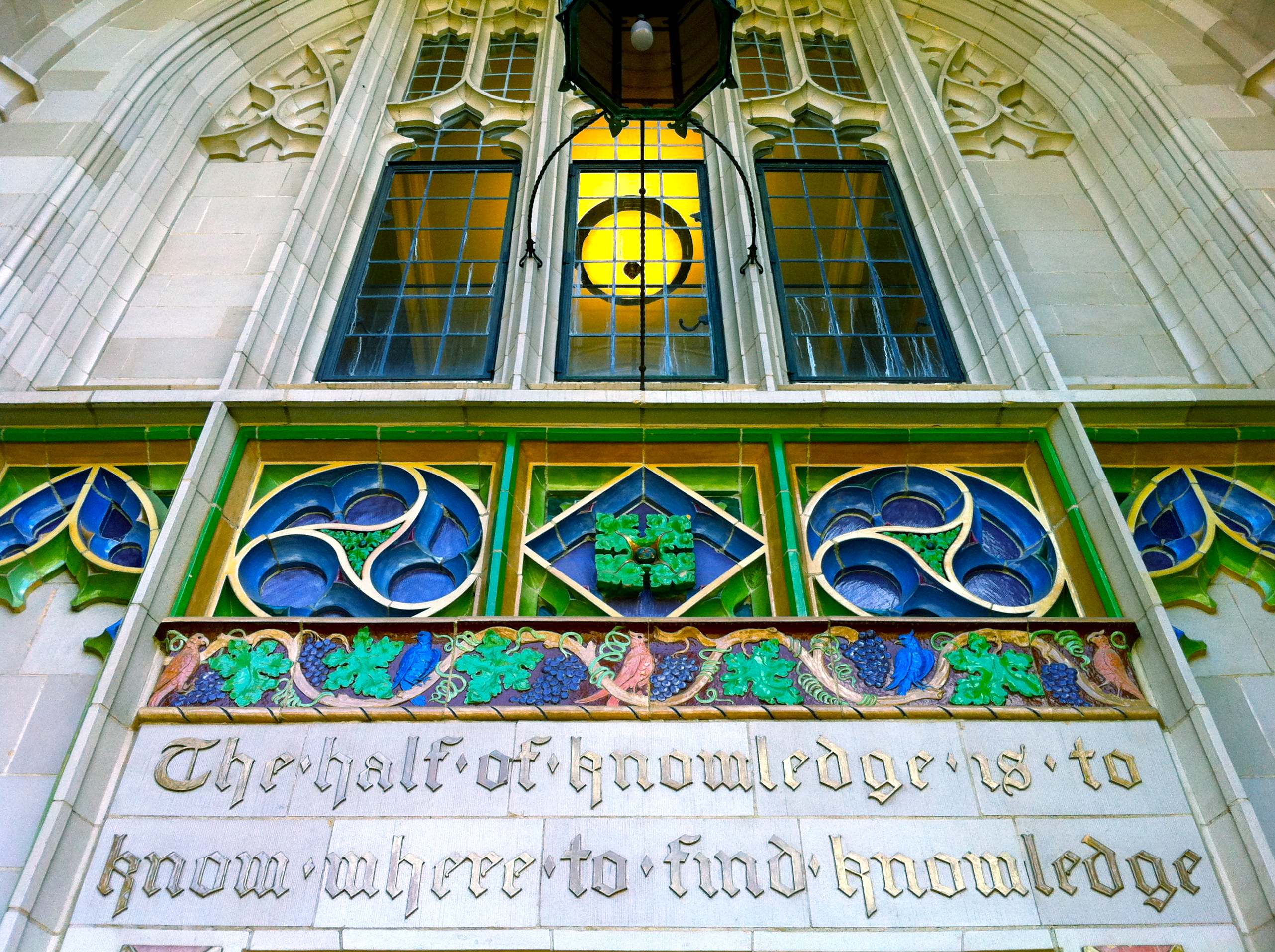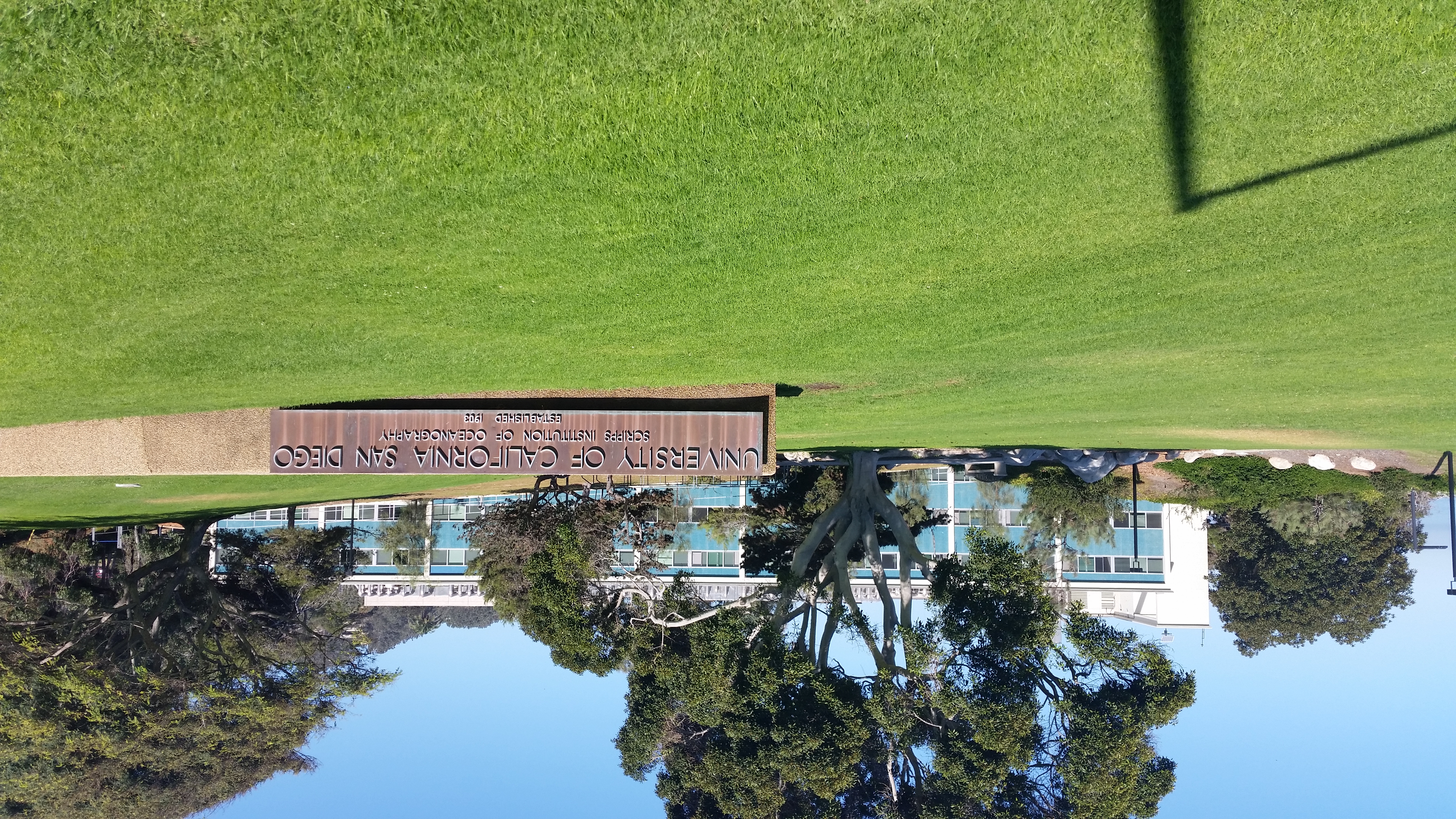|
David M. Gilbert
David M. Gilbert is an American molecular biologist, known for work in DNA replication. He is an investigator at the San Diego Biomedical Research Institute. Gilbert was formerly a professor of molecular biology in the Department of Biological Science and was co-founder and a director of the Center for Genomics and Personalized Medicine at Florida State University. Education and career Gilbert received his BA degrees in Biochemistry/Cell Biology and Philosophy from the University of California, San Diego and his PhD in Genetics from Stanford University. He did two post-doctoral training periods, first as an EMBO fellow with Pierre Chambon in Strasbourg, France, studying transcriptional control, and second as a Roche fellow with Melvin DePamphilis studying replication origin recognition. He joined the faculty at State University of New York (SUNY) Upstate Medical University in 1994 and was appointed full professor in 2003. In 2006, he moved to Florida State University. He was ... [...More Info...] [...Related Items...] OR: [Wikipedia] [Google] [Baidu] |
Florida State University
Florida State University (FSU or Florida State) is a Public university, public research university in Tallahassee, Florida, United States. It is a senior member of the State University System of Florida and a preeminent university in the state. Chartered in 1851, it is located on Florida's oldest continuous site of higher education. Florida State University maintains 17 colleges, as well as 58 centers, facilities, labs, institutes, and professional training programs. In 2023, the university enrolled 43,701 students from all 50 states and 135 countries. Florida State is home to Florida's only national laboratory, the National High Magnetic Field Laboratory, and was instrumental in the commercial development of the anti-cancer drug Taxol. Florida State University also operates the John & Mable Ringling Museum of Art, the State Art Museum of Florida and one of the nation's largest museum/university complexes. The university is accredited by the Southern Association of College ... [...More Info...] [...Related Items...] OR: [Wikipedia] [Google] [Baidu] |
Chromosomes
A chromosome is a package of DNA containing part or all of the genetic material of an organism. In most chromosomes, the very long thin DNA fibers are coated with nucleosome-forming packaging proteins; in eukaryotic cells, the most important of these proteins are the histones. Aided by chaperone proteins, the histones bind to and condense the DNA molecule to maintain its integrity. These eukaryotic chromosomes display a complex three-dimensional structure that has a significant role in transcriptional regulation. Normally, chromosomes are visible under a light microscope only during the metaphase of cell division, where all chromosomes are aligned in the center of the cell in their condensed form. Before this stage occurs, each chromosome is duplicated ( S phase), and the two copies are joined by a centromere—resulting in either an X-shaped structure if the centromere is located equatorially, or a two-armed structure if the centromere is located distally; the joined ... [...More Info...] [...Related Items...] OR: [Wikipedia] [Google] [Baidu] |
Year Of Birth Missing (living People)
A year is a unit of time based on how long it takes the Earth to orbit the Sun. In scientific use, the tropical year (approximately 365 solar days, 5 hours, 48 minutes, 45 seconds) and the sidereal year (about 20 minutes longer) are more exact. The modern calendar year, as reckoned according to the Gregorian calendar, approximates the tropical year by using a system of leap years. The term 'year' is also used to indicate other periods of roughly similar duration, such as the lunar year (a roughly 354-day cycle of twelve of the Moon's phasessee lunar calendar), as well as periods loosely associated with the calendar or astronomical year, such as the seasonal year, the fiscal year, the academic year, etc. Due to the Earth's axial tilt, the course of a year sees the passing of the seasons, marked by changes in weather, the hours of daylight, and, consequently, vegetation and soil fertility. In temperate and subpolar regions around the planet, four seasons a ... [...More Info...] [...Related Items...] OR: [Wikipedia] [Google] [Baidu] |
Living People
Purpose: Because living persons may suffer personal harm from inappropriate information, we should watch their articles carefully. By adding an article to this category, it marks them with a notice about sources whenever someone tries to edit them, to remind them of WP:BLP (biographies of living persons) policy that these articles must maintain a neutral point of view, maintain factual accuracy, and be properly sourced. Recent changes to these articles are listed on Special:RecentChangesLinked/Living people. Organization: This category should not be sub-categorized. Entries are generally sorted by family name In many societies, a surname, family name, or last name is the mostly hereditary portion of one's personal name that indicates one's family. It is typically combined with a given name to form the full name of a person, although several give .... Maintenance: Individuals of advanced age (over 90), for whom there has been no new documentation in the last ten ... [...More Info...] [...Related Items...] OR: [Wikipedia] [Google] [Baidu] |
Florida State University Faculty
Florida ( ; ) is a state in the Southeastern region of the United States. It borders the Gulf of Mexico to the west, Alabama to the northwest, Georgia to the north, the Atlantic Ocean to the east, the Straits of Florida to the south, and The Bahamas to the southeast. About two-thirds of Florida occupies a peninsula between the Gulf of Mexico and the Atlantic Ocean. It has the longest coastline in the contiguous United States, spanning approximately , not including its many barrier islands. It is the only state that borders both the Gulf of Mexico and the Atlantic Ocean. With a population of over 23 million, it is the third-most populous state in the United States and ranks seventh in population density as of 2020. Florida spans , ranking 22nd in area among the states. The Miami metropolitan area, anchored by the cities of Miami, Fort Lauderdale, and West Palm Beach, is the state's largest metropolitan area, with a population of 6.138 million; the most populous city ... [...More Info...] [...Related Items...] OR: [Wikipedia] [Google] [Baidu] |
Miami Herald
The ''Miami Herald'' is an American daily newspaper owned by McClatchy, The McClatchy Company and headquartered in Miami-Dade County, Florida. Founded in 1903, it is the fifth-largest newspaper in Florida, serving Miami-Dade, Broward County, Florida, Broward, and Monroe County, Florida, Monroe counties. It once circulated throughout Florida, Latin America, and the Caribbean. The ''Miami Herald'' has been awarded 24 Pulitzer Prizes. Overview The newspaper has been awarded 24 Pulitzer Prizes since beginning publication in 1903. Well-known columnists include Pulitzer-winning political commentator Leonard Pitts, Leonard Pitts Jr., Pulitzer-winning reporter Mirta Ojito, humorist Dave Barry and novelist Carl Hiaasen. Other columnists have included Fred Grimm and sportswriters Michelle Kaufman, the late Edwin Pope, Dan Le Batard, Bea Hines and Greg Cote. The ''Miami Herald'' participates in "Politifact Florida", a website that focuses on Florida issues, with the ''Tampa Bay Times''. ... [...More Info...] [...Related Items...] OR: [Wikipedia] [Google] [Baidu] |
Journal Of Cell Biology
The ''Journal of Cell Biology'' is a peer-reviewed scientific journal published by Rockefeller University Press. History In the early 1950s, a small group of biologists began to explore intracellular anatomy using the emerging technology of electron microscopy. Many of these researchers were at The Rockefeller Institute of Medicine, the predecessor of The Rockefeller University. As their work progressed to publication, they were disappointed with the limited quality of halftone image reproduction in the printed journals of the time, and frustrated by the narrow editorial policies of existing journals regarding their image-based results. In 1954, the Director of the Rockefeller Institute, Detlev Bronk, convened a luncheon to discuss the creation of a new journal as a venue for publication of this type of work. The first issue of ''The Journal of Biophysical and Biochemical Cytology'' was published less than a year later on January 25, 1955. A subscription cost $15 per year. T ... [...More Info...] [...Related Items...] OR: [Wikipedia] [Google] [Baidu] |
American Cancer Society
The American Cancer Society (ACS) is a nationwide non-profit organization dedicated to eliminating cancer. The ACS publishes the journals ''Cancer'', '' CA: A Cancer Journal for Clinicians'' and '' Cancer Cytopathology''. History The society was founded on May 22, 1913, by ten physicians and five businessmen in New York City under the name "American Society for the Control of Cancer" (ASCC). The current name was adopted in 1944. At the time of founding, it was not considered appropriate to mention the word "cancer" in public and information concerning this illness was cloaked in a climate of fear and denial. The top item on the founders' agenda was to raise awareness of cancer, before any other progress could be made in funding research. Therefore, a frenetic writing campaign was undertaken to educate doctors, nurses, patients and family members about cancer. Articles were written for popular magazines and professional journals. The ASCC undertook to publish their own journal, ... [...More Info...] [...Related Items...] OR: [Wikipedia] [Google] [Baidu] |
ENCODE
The Encyclopedia of DNA Elements (ENCODE) is a public research project which aims "to build a comprehensive parts list of functional elements in the human genome." ENCODE also supports further biomedical research by "generating community resources of genomics data, software, tools and methods for genomics data analysis, and products resulting from data analyses and interpretations." The current phase of ENCODE (2016-2019) is adding depth to its resources by growing the number of cell types, data types, assays and now includes support for examination of the mouse genome. History ENCODE was launched by the US National Human Genome Research Institute (NHGRI) in September 2003. Intended as a follow-up to the Human Genome Project, the ENCODE project aims to identify all functional elements in the human genome. The project involves a worldwide consortium of research groups, and data generated from this project can be accessed through public databases. The initial release of ENCODE ... [...More Info...] [...Related Items...] OR: [Wikipedia] [Google] [Baidu] |
Cell Cycle
The cell cycle, or cell-division cycle, is the sequential series of events that take place in a cell (biology), cell that causes it to divide into two daughter cells. These events include the growth of the cell, duplication of its DNA (DNA replication) and some of its organelles, and subsequently the partitioning of its cytoplasm, chromosomes and other components into two daughter cells in a process called cell division. In eukaryotic cells (having a cell nucleus) including animal, plant, fungal, and protist cells, the cell cycle is divided into two main stages: interphase, and the M phase that includes mitosis and cytokinesis. During interphase, the cell grows, accumulating nutrients needed for mitosis, and replicates its DNA and some of its organelles. During the M phase, the replicated Chromosome, chromosomes, organelles, and cytoplasm separate into two new daughter cells. To ensure the proper replication of cellular components and division, there are control mechanisms kno ... [...More Info...] [...Related Items...] OR: [Wikipedia] [Google] [Baidu] |
University Of California, San Diego
The University of California, San Diego (UC San Diego in communications material, formerly and colloquially UCSD) is a public university, public Land-grant university, land-grant research university in San Diego, California, United States. Established in 1960 near the pre-existing Scripps Institution of Oceanography in La Jolla, UC San Diego is the southernmost of the ten campuses of the University of California. It offers over 200 undergraduate and graduate degree programs, enrolling 33,096 undergraduate and 9,872 graduate students, with the second largest student housing capacity in the nation. The university occupies near the Pacific coast. UC San Diego consists of 12 undergraduate, graduate, and professional schools as well as 8 undergraduate residential colleges. The university operates 19 organized research units as well as 8 School of Medicine research units, 6 research centers at Scripps Institution of Oceanography, and 2 multi-campus initiatives. UC San Diego is als ... [...More Info...] [...Related Items...] OR: [Wikipedia] [Google] [Baidu] |





